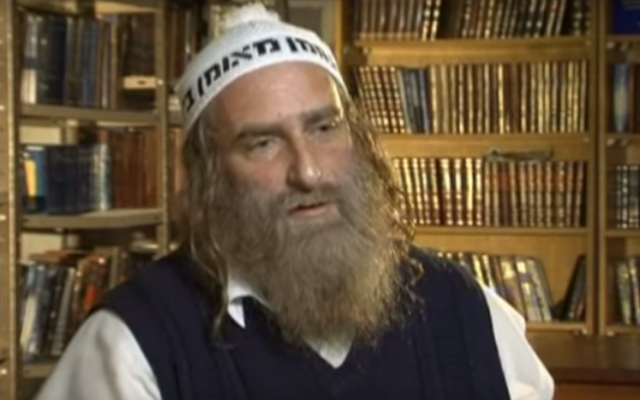The Origins of the Non-Jewish Custom Of ‘Shlissel Challah’ (Key Bread)
“The Loaf of Idolatry?”
By Shelomo Alfassa
Introduction
Every year Jewish women, young and old, partake in an Ashkenazi[1] custom to place a key (such as a door key to a home), inside the dough of a loaf of bread that they bake.[2] This custom is known as shlissel challah—shlissel from the German language shlüssel (key) and challah or hallah from the Hebrew for bread.[3]
While a metal key is often baked within the bread, some form the bread
itself into the shape of a key or even arrange sesame seeds on top in
the form of a key.[4] Often times, these women gather in celebratory groups with the common belief that baking the shlissel challah
will bring blessing into their homes, and specifically, the blessing of
increased fiscal livelihood. There is also a seemingly new ‘custom’ of
baking shlissel challah in the “merit” of a sick person, as a way of helping them recover from physical disease or trauma.[5] A poll on the popular Orthodox Jewish website imamother.com asked participants: “How do you make your schlissel [sic] challah?”[6]
The 88 respondants reported: In the shape of a key 13% [12]; With a key
baked in it 61% [54]; Neither, I don't do this 17% [15]; Other 7% [7].
Non-Jewish Origins
The baking of a key inside a bread is a non-Jewish custom
which has its foundation in Christian, and possibly even earlier, pagan
culture. At least one old Irish source tells how at times when a town
was under attack, the men said, “let our women-folk be instructed in the
art of baking cakes containing keys.”[7]
Keys were traditionally manufactured in the form of a cross, the traditional symbol of Christianity,[8] a physical item all Christian commoners would posses in their home.[9]
On Easter, the Christian holiday which celebrates the idea of Jesus
‘rising’ from the dead, they would bake the symbol of Jesus—the key
shaped like a cross—into or onto a rising loaf.[10]
This was not only a religious gesture, but the bread was a special
holiday treat. Sometimes these breads were wholly formed in the shape of
a cross; other times the shape of a cross was made out of dough and
applied on top. In the context of historically baking a key into
bread—the key itself, intrinsically, was a symbol of Christianity and by
extension symbolized Jesus ‘rising’ in the dough.[11]
Connection to Passover
The modern Jewish custom of baking the symbolic shlissel challah, annually takes place on the shabbat immediately following the holiday of Pessah, when tens (if not hundreds) of thousands of religiously observant Jewish women[12] practice this observance.
In Christianity, baked goods associated with keys are commonly called ‘Easter breads,’[13] and in Europe they are also known as ‘Paschals,’[14] as the holiday of Easter in the East is known as ‘Pascha’ or ‘Pascua.’ This is most likely the reason Christians often call Easter breads baked with keys Paschals.[15] Before the Romans destroyed the Beit HaMikdash (the holy Temple) in Jerusalem, the focus of the Passover holiday for the Jewish people was the Korban Pessah (lit. Pessah sacrifice, also known as the Paschal Lamb[16]). Within Christianity, Jesus is known as the ‘Paschal Lamb.’
Geographic Origins
Professor Marvin Herzog, a world renowned Yiddish linguist at Columbia University
tells that dough twisted in the form of a key (among other shapes such
as a ladder) were found to top challah loafs in Poland, “…the
distribution of some of these things was a regional matter.”[17]
As an example of the regionality, Prof. Herzog created a map
demonstrating where dough was shaped as a ladder and placed on challah,
and how it was specific only to certain communities and was not
universal. Insomuch as a ladder motif was regional, it can be
conjectured that the use of a key or key motif could have evolved the
same way. Both a ladder and a key are symbolic as tools that could
metaphysically help one attain heaven, as they both help ‘gain access.’
Lack of Sources
While the custom is said to be mentioned in the writings of Avraham Yehoshua Heshel (the “Apter Rav” 1748-1825) and in the Ta’amei ha-Minhagim (1891), there is no one clear source for shlissel challah. And while people will say there is a passuq attributed to it, there is not. And, even if there were, a passuq that can be linked to the practice is not the same as a source. Micha Berger, founder of the AishDas Society,
[orthodox] calls this type of logic ‘reverse engineering,’ it’s like
drawing a circle around an arrow in a tree, and subsequently declaring
the arrow is a bullseye.[18] The idea of baking shlissel challah
is not from the Torah; it’s not in the Tannaitic, Amoraitic,
Savoraitic, Gaonic or Rishonic literature. Rabbi Shlomo Aviner of
Israel’s Yeshivat Ateret Yerushalayim said that while baking challah with a key in it is not forbidden, “there is no meaning in doing so.”[19] Rabbi Moshe Ben-Chaim[20] of Mesora.Org [orthodox] teaches that:
The Torah teaches that Hashem punishes the wicked, and
rewards the righteous. It does not say that challah baking or any other
activity will help address our needs…When the matriarchs were barren,
they did not resort to segulas, but introspected and prayed…Nothing in
Torah supports this concept of segula; Torah sources reject the idea of a
segula…baking challas with brachos cannot help…segulas are useless, and
violate the Torah prohibition of Nichush [good luck charms]. It does
not matter if the charm is a rabbit’s foot, a horseshoe, a challah, key
or a red bendel. The practice assumes that forces exist, which do not,
and it is idolatrous.[21]
Rabbi Reuven Mann, Principal of Yeshiva B'nei Torah
in Far Rockaway, New York [orthodox] says one should ask themselves:
“What connection is there between putting a key in the dough of a
challah (schlissel challah) and the improvement of my material situation
(parnasa)?”[22]
He says:
The dangers of deviation are very great. For by inventing
new practices not prescribed by Torah one, in fact, implicitly denies
the Torah. He is in effect saying that the Torah is not perfect, for it
does not work in my case, and there are other man made practices out
there which will work for me. In effect this is a negation of Torah and
constitutes a form of idolatry, heaven forbid….[this] indicates that a
person has lost faith in the authentic prescriptions of Torah. By
performing these “unauthorized actions” one is implicitly affirming that
there are other “forces” out there besides God which will respond to
the needs of the performer of these ritualistic practices. This
constitutes a form of “Avodah Zorah.”
Who Is Doing It?
As this is written in 2011, the concept and observance of shlissel challah continues
to grow and be exploited, especially in the USA and among newly
religious Jews who are being taught it is acceptable to use a loaf of
bread and a machine made die-cut piece of brass as an intermediary
between them and the Almighty.
The baking is conducted today across the Jewish spectrum.
It is widely popular (but certainly not universally practiced) in both
the Hassidic and non-Hassidic haredi communities.[23]
It is also conducted by the Modern-Orthodox, among the ‘Yeshivish’
communities and by other American Orthodox Jews such as those with
Lithuanian and German family ancestry.[24] The idea of shlissel challah
is known to be taught in schools, but probably is upon the whim of the
individual teacher. An informal telephone survey of 40 participants
demonstrated that it has been taught in haredi educational institutions
such as the Bais Yaakov and Bnos Yisroel schools in New
York City, Los Angeles, Miami and other locations. It is also taught by
teachers in the Centrist / Zionistic Orthodox Jewish schools.[25]
After Pessah, shlissel challah can be found being sold in stores, a challah with a key right inside the bag! As the custom of shlissel challah
continues to be passed along from mother to daughter and in social
groups, it also has been popularized on Facebook, Twitter and promoted
on other popular internet social media outlets. On the internet can even
be found an anonymously distributed prayer, said to be specifically
developed for those who make the key challah.[26]
An internet search will find dozens of articles and comments on shlissel challah:
· Shlissel
Challah is a segula, good omen, for parnassa, or livelihood. It's a
very interesting custom with many sources and traditions.[27]
· It's
really bizarre, and EVERYONE is doing it. It was all the talk among the
women at the playground. Mind you, the talk was about technique for
making it, not whether the practice has any merit or makes any sense.[28]
· My friend told me about this and we baked the key in the challah and this week we got a tax refund that we were not expecting![29]
· I
also shape a piece of dough in the shape of a key and place it
lengthwise on the challah, from end to end, so that everyone can eat a
piece of the key.[30]
· I had a aunt who one year put a car key and got a new car and another year put a house key and bought a house that year.[31]
· The
economic downturn has affected virtually every community and
Lakewood...For the Shabbos after Pesach, Lakewood Mayor R’ Menashe
Miller arranged for a key to Lakewood’s Town Hall [to be used in
schlissel challah][32]
· This
week is the week to bake shlissel challah, challah imprinted with or
shaped like a key. It is a segulah for parnassah, and fun, too![33]
Halakhic Acceptance
Several clever ideas have been devised which attempt to
connect the non-Jewish idea of ‘key bread’ to the Torah, however these
all fail to bring a Jewish wrapper to a wholly non-Jewish tradition. A
popular one attempts to inexplicably connect the idea of a spiritual
“gate” to a physical “key,” during the period when Jews count the 49
days during the Omer up to the 50th day which is the holiday of Shavuot.[34] The idea of the 50th day represents the sha’ar hanun (50th gate), which according to kabbalah is known as the sha’ar binah (gate of understanding—and, since we are said to go {spiritually} from gate to gate,[35] this is why the focus is on a key, as a key will ‘unlock’ a gate.
Further, modern commentators have exploited the name of
HaRambam (Maimonides), to indicate that he demonstrates an association
between the idea of a key with challah.[36] Such alleged connections are baseless and are only meager attempts to legitimize the idea of shlissel challah. Nonetheless,
it’s well known that HaRambam himself would have been utterly against
the practice of baking a key into a bread which allegedly could
influence the Almighty. It is one of HaRambam’s clear principles that
any belief in an intermediary between man and God (including a physical
object), is considered heretical to the Torah. He teaches that God is
the only One we may serve and praise; that we may not act in this way
toward anything beneath God, whether it be an angel, a star, or one of
the elements; there are no intermediaries between us and God; that all
our prayers should be directed towards God; and that nothing else should
even be considered. This would certainly include baking a key inside a
loaf of bread and/or shaping a bread in the form of a key, then
expecting it to either change your fortune or influence your future.
Commentary
It is up to each of us to halt legitimizing any
extrahalakhic or even extraminhagic activities. The need for a quick
‘spiritual fix’ such as baking a bread with a key in it and hoping God
rewards the baker(s), seems to have replaced the desire for pure prayer
with kavanah (intrinsic intent). Increasingly, tefillot
(prayer) is being trumped by what is ‘cool,’ ‘the in thing,’ or being
‘with it.’ The truth of the matter is, often in the observant Jewish
world, people care more about ‘fitting in’ with their peers, then with
God.
On the far end of the scale, it can be said that shlissel challah
observance is a nothing less than ‘the way of the Amorites.’ It is
precisely this type of behavior and observance which Jews are supposed
to separate themselves from, so it doesn’t go on to influence our
thoughts and deeds. Am Yisrael was not created to lose itself in
such folklore, and Judaism without disciplined study is nothing but
folklore. Judaism allows and encourages the use of our minds. It’s never
too late to realign our path with Torah sources, not blind faith
practices which are “trendy,” “in,” or “cool.”
Educated Jews should help to promote Torah sources to our
friends and neighbors, not false practices which are of non-Jewish
origin and have nothing to do with Judaism.
Shelomo Alfassa is a Judaic studies educator and author
who focuses on history, rabbinics and talmud. He works at the Center
for Jewish History in NYC.
FOOTNOTES:
[1] Jews with family roots in
countries of Europe and Asia such as Poland, Belarus, Hungary,
Lithuania, Ukraine, Russia, etc. Note: In the once popular The Hallah Book,
the author mentions that key bread originated in eighteenth century
Ukraine, but did not provide a source or citation. See: Reider, Freda. The Hallah Book. New York: Ktav, 1986. 21
[2] Note: as of late, this custom
is becoming increasingly common among Sephardic Jews as well due to
co-mingling of communities and day-to-day social intercourse.
[3] aka shlisl khale
[4] A photograph of a shlissel challah exists in the Encyclopedia Judaica,
1972 edition, volume 6 page 1419. The loaf, with a long metal key
impressed and left to bake on top, is captioned: “Hallah from Volhynia
[Western Ukraine near Poland and Belarus] for the first Sabbath after
Passover. The key placed on top of the loaf symbolizes the ‘gate of
release’ which traditionally remains open for a month after the
festival.”
[5] [Shlissel Challah for Refuah
Shlaima] (Are you or anyone you know baking challah this week? Someone
is trying to put together a group of 'bakers' for a zechus for a
complete refuah shelayma for Rochel Leah Bas Miriam Toba[.] If you can
participate, please email: sandyn@... Either way, please have her in
mind in your tefillos.
Tizku L'mitzvos!) groups.yahoo.com/group/FrumSingleMoms/message/663
[6] imamother.com/forum/viewtopic.php?t=111317 Poll was in April 2010
[7] O'Brien, Flann. The Best of Myles. Normal, IL; Dalkey Archive Press, 1968. 393
[8] Small breads with the sign of the cross have been found as far back as 79 CE in the ancient Roman city of Herculaneum (see The New York Times
March 31, 1912). This was when Christianity emerged in Roman Judea as a
Jewish religious sect which gradually spread out of Jerusalem.
[9] This was no different than the poor Jews of the ‘old world,’ who often would not have holy books but would certainly have a mezuzah on their door which they considered a holy script in their own home.
[10] Another account mentions a
key in a loaf: “In other parts of Esthonia [sic], again, the Christmas
Boar [cake], as it is called, is baked of the first rye cut at harvest;
it has a conical shape and a cross is impressed on it with a pig’s bone
or a key, or three dints are made in it with a buckle or a piece of
charcoal. It stands with a light beside it on the table all through the
festival season.” See: Frazer, James George. The Golden Bough.
London: Macmillan and Co., 1920. VII. Part 5. 302 (Thanks go to Rabbi
Yossie Azose who led me to this mention. Rabbi Azose said: “It's a sad
commentary on the state of Jewry today that such a custom [shlissel
challah] has become so widespread and accepted; moreover that there are
not more contemporary Torah leaders who are not decrying this practice.”
Via email December 20, 2011.)
[11] Similar, there are modern
non-Jewish customs, such as in Mexico, where a ‘baby Jesus’ figurine is
baked into cupcakes; often, the child who finds it wins a prize. This is
also practiced in the U.S. state of Louisiana beginning at Mardi Gras
and practiced for 30 days after. There, a ‘baby Jesus’ toys baked into a
whole cake, and whoever finds the baby in their piece has to buy the
next day's cake. In Spain, there is a tradition of placing a small Jesus
doll inside a cake and whoever finds it must take it to the nearest
church on February 2, Candlemas Day (Día de la Candelaria), which celebrates the presentation of Jesus in Jerusalem.
[12] This includes women of all backgrounds, including Hassidic and non-Hassidic, Modern Orthodox, etc.
[13] Chandler, Richard. Travels in Asia Minor.
London 1776. 158 (It’s been supposed the British custom of
‘cross-buns,’ small rolls with a cross on them eaten on the Christian
holiday of Good Friday {the Day of the Cross}, probably arose from
this.)
[14]Justin Martyr, also known as
just Saint Justin (103–165 CE), was an early Christian apologist. He
depicted the paschal lamb as being offered in the form of a cross and he
claimed that the manner in which the paschal lamb was slaughtered
prefigured the crucifixion of Jesus. Some opinions indicate rabbinic
evidence shows that in Jerusalem the Jewish paschal lamb was offered in a
manner which resembled a crucifixion. (See: Tabory, Joseph. “From The
Crucifixion of the Paschal Lamb.” The Jewish Quarterly Review, New Series, Vol. 86, No. 3/4 (Jan.-Apr., 1996), pp. 395-406.
[15] Paschal derives from the Latin paschalis or pashalis, which means “relating to Easter,” from Latin pascha (‘Passover,’ i.e. the Easter Passover’), Greek Πάσχα, Aramaic pasḥā, in turn from the Hebrew pessah,
which means “to be born on, or to be associated with, Passover day.”
Since the Hebrew holiday Passover coincides closely with the later
Christian holiday of Easter, the Latin word came to be used for both
occasions.
[16] Driscoll, James F. “Paschal Lamb.” The Catholic Encyclopedia. Vol. 8. New York: Robert Appleton Company, 1910.
[17] Herzog, Marvin. The Yiddish Language in Northern Poland: Its Geography and History. Bloomington, Indiana University, 1965. 30-32.
[18] See. aishdas.org/avodah/vol25/v25n384.shtml & aishdas.org/avodah/vol28/v28n067.shtml#03
[19] ravaviner.com/2011/04/shut-sms-110.html
[20] Rabbi Moshe Ben-Chaim has been a Jewish educator for 25 years. He is the founder of www.Mesora.org and publisher of the JewishTimes.
[21] “Segulas: Open Letter about
the Shliss Challah from Moshe Ben-Chaim” (Mesora.Org) reposted on
aishdas.org/avodah/vol28/v28n067.shtml#12
[22] Mann, Reuven. “Segulas II: Be-emunah Shlaimah: With Perfect Faith.” mesora.org/segulasII.htm
[23] While some families have a minhag (tradition) of schlisshel challah, others have none.
[24] It also occasionally takes
place by those in the Reform and Conservative synagogue movements and at
‘JCC’ Jewish Community Centers.
[25] Survey conducted by this author November 12, 2011-December 1, 2011 (This includes the Shulamith School for Girls in Brooklyn, NY, the first Orthodox Jewish elementary school for girls in North America).
[26] thefivetowns.com/images/schlisseltefillah.pdf
[27] thekosherchannel.com/kosher-recipes-blog.html
[28] backoftheshul.com/viewtopic.php?f=21&t=3581
[29] asimplejew.blogspot.com/2007/04/guest-posting-by-talmid-shlissel.html
[30] imamother.com/forum/viewtopic.php?t=149108
[31] imamother.com/forum/viewtopic.php?t=2033
[32] jewishupdates.com/2011/05/09/key-to-lakewood%E2%80%99s-town-hall-used-for-shlissel-challah/
[33] metroimma.com/group/shabbatchallah
[34] You shall count for
yourselves - from the day following the holiday, the day when you bring
the omer as a wave-offering - for seven complete weeks. Until the after
the seventh week you shall count - fifty days…. (Lev. 23:15-16)
[35] From Rabbi Jacob ben Sheshet
of Spain, is where we find the the concept and idea that the fifty
gates (examined by the original kabbalists in the milieu of where the Zohar
was written), represent a way to understand the Torah, “Fifty gates
consist of five sets of ten gates, each set explicating one of the five
parts of the Pentateuch.” See: Idel, Moshe. Absorbing Perfections: Kabbalah And Interpretation.
Binghamton: Vail-Ballou Press, 2002. 212 / Also, this very subjective
concept has its origin in the Talmud (Gemara RH 21b), and even there,
there is more than one interpretation. Further, the connection to the
Omer is clearly out of context, as what the Gemara says is that “Fifty
gates of understanding were created in the world, and all were given to
Moshe except one.” This, of course, is completely unrelated to the topic
of the Omer.
[36] Purportedly we learn from the “Tzvi LaTzadik” that he lists at the beginning of his Hilkhot Hamets uMatsa,
that there are 8 mitsvot (3 positive and 5 negative) involved with
connecting the idea of a key with challah. The alleged indication is
that the key that is put in the challah alludes to the letters מפתח
(key) spell פ״ת ח׳ מ׳צות. (פ״ת is bread, representing the “hamets” and
מ׳ is for matsa- these allude to Hilkhot Hamets uMatsa, and the ח׳ is the 8 mitsvot involved).











.jpg)





